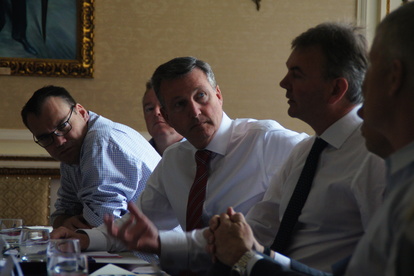Expert: Bryce Skaff, Co-Head of the Global Client Group (GCG) & Vice President, Dimensional Facilitator: Ben Wright, Director Change Squared
Headlines:
- Delegates felt that shared sense of vision / alignment is the secret of a high performing business
- The more narrowly focussed the target client profile, the higher the performance of the adviser
- The structure of an M&A deal is more important that the valuing it correctly
- Organic growth is more efficient than inorganic (acquisition)
Context:
All staff had to be aligned and pointed in the same direction to get maximum effect. Where the vision wasn’t clearly defined and well communicated, performance decreases.
Firms who have a very narrow target market outperform those who have a less well-defined target market. However, delegates said it can be hard to ensure advisers follow the firms target market. Unless advisers have full belief in the target market, and the benefit of sticking to it, they are prone to taking on customers who don’t fit the target market but represent easy income.
When organic growth is more valuable than inorganic growth. Whilst acquisition creates faster growth, firms who don’t buy have much higher rates of more cost-effective organic growth.
Deal structure is more important for M&A than valuation of the business. This is already the case in the US, which is a more established M&A market than the UK, yet valuations are still seen as one of the biggest deal breakers in the UK.
The 4 key areas high performing firms discuss with clients aren’t financial. They are hobbies, values, behaviours, and profession. Focussing the discussion on these areas with clients was more likely to result in business as it creates the feeling for the client that the adviser “really knows” them.
High performing firms are more likely to use human resources for interactions with clients than back-office admin tasks. Human capital is the most expensive resource in a business.
By automating back-office, administrative tasks, people can spend more time talking to people, creating more value.
Key takeaways:
- Advisers/business owners need more business-oriented education
- Despite the experience and knowledge around the table, virtually all delegates were surprised by the data that Dimensional shared
- Specifically, the value of being selective with clients, the importance of having a very specific target market and organic v’s inorganic growth caused the most interest


